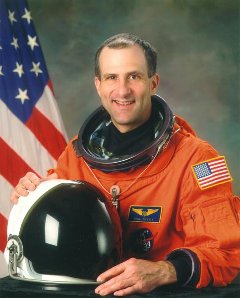Florida (/ˈflɒrɪdə/ FLORR-ih-də) is a state in the Southeastern region of the United States. It borders the Gulf of Mexico to the west, Alabama to the northwest, Georgia to the north, the Bahamas and Atlantic Ocean to the east; and the Straits of Florida and Cuba to the south. It is the only state that borders both the Gulf of Mexico and the Atlantic Ocean. With a population of over 21 million, it is the third-most populous state in the United States, the most populous among the easterly states, and ranks eighth in population density as of 2020. It spans 65,758 square miles, ranking 22nd in area among the 50 states. The Miami metropolitan area, anchored by the cities of Miami, Fort Lauderdale, and West Palm Beach, is the state's largest metropolitan area with a population of 6.138 million, and the state's most-populous city is Jacksonville with a population of 949,611. Florida's other major population centers include Tampa Bay, Orlando, Cape Coral, and the state capital of Tallahassee.
Various American Indian tribes have inhabited Florida for at least 14,000 years. In 1513, Spanish explorer Juan Ponce de León became the first known European to make landfall, calling the region La Florida (land of flowers) ([la floˈɾiða]) for its lush greenery and the Easter season (Pascua Florida in Spanish). Florida subsequently became the first area in the continental U.S. to be permanently settled by Europeans, with the settlement of St. Augustine, founded in 1565, being the oldest continuously inhabited city. Florida was a Spanish territory frequently attacked and coveted by Great Britain before Spain ceded it to the U.S. in 1819 in exchange for resolving the border dispute along the Sabine River in Spanish Texas. Florida was admitted as the 27th state on March 3, 1845, and was the principal location of the Seminole Wars (1816–1858), the longest and most extensive of the Indian Wars in U.S. history. The state seceded from the Union on January 10, 1861, becoming one of the seven original Confederate States, and was readmitted to the Union after the Civil War on June 25, 1868.
Since the mid-20th century, Florida has experienced rapid demographic and economic growth. Its economy, with a gross state product (GSP) of $1.4 trillion, is the fourth-largest of any U.S. state and the 16th-largest in the world; the main sectors are tourism, hospitality, agriculture, real estate, and transportation. Florida is world-renowned for its beach resorts, amusement parks, warm and sunny climate, and nautical recreation; attractions such as Walt Disney World, the Kennedy Space Center, and Miami Beach draw tens of millions of visitors annually. Florida is a popular destination for retirees, seasonal vacationers, and both domestic and international migrants; it hosts nine out of the ten fastest-growing communities in the U.S. The state's close proximity to the ocean has shaped its culture, identity, and daily life; its colonial history and successive waves of migration are reflected in African, European, Indigenous, Latino, and Asian influences. Florida has attracted or inspired some of the most prominent American writers, including Ernest Hemingway, Marjorie Kinnan Rawlings, and Tennessee Williams, and continues to attract celebrities and athletes, particularly in golf, tennis, auto racing, and water sports. Florida has been considered a battleground state in American presidential elections, particularly those in 2000, 2016, and 2020.
About two-thirds of Florida occupies a peninsula between the Gulf of Mexico and the Atlantic Ocean. It has the longest coastline in the contiguous United States, spanning approximately 1,350 miles, not including its many barrier islands. Florida has 4,510 islands that are ten acres or larger in area, the second-largest of any state after Alaska. Much of Florida is at or near sea level, and is characterized by sedimentary soil. Florida is the flattest state in the country, with the lowest high point of any U.S. state, at just 345 feet.
Florida's climate varies from subtropical in the north to tropical in the south. It is the only state besides Hawaii to have a tropical climate, and is the only continental state with both a tropical climate, located at the southern portion of the state, and a coral reef. Florida has several unique ecosystems, including Everglades National Park, the largest tropical wilderness in the U.S. and among the largest in the Americas. Unique wildlife include the American alligator, American crocodile, American flamingo, Roseate spoonbill, Florida panther, bottlenose dolphin, and manatee. The Florida Reef is the only living coral barrier reef in the continental United States, and the third-largest coral barrier reef system in the world, after the Great Barrier Reef and the Belize Barrier Reef.
More recent historians describe that after U.S. independence, settlers in Georgia increased pressure on Seminole lands, and skirmishes near the border led to the First Seminole War (1816–19). The United States purchased Florida from Spain by the Adams-Onis Treaty (1819) and took possession in 1821. The Seminole were moved out of their rich farmland in northern Florida and confined to a large reservation in the interior of the Florida peninsula by the Treaty of Moultrie Creek (1823). Passage of the Indian Removal Act (1830) led to the Treaty of Payne's Landing (1832), which called for the relocation of all Seminole to Indian Territory (now Oklahoma). Some resisted, leading to the Second Seminole War, the bloodiest war against Native Americans in United States history. By 1842, most Seminoles and Black Seminoles, facing starvation, were removed to Indian Territory west of the Mississippi River. Perhaps fewer than 200 Seminoles remained in Florida after the Third Seminole War (1855–1858), having taken refuge in the Everglades, from where they never surrendered to the US. They fostered a resurgence in traditional customs and a culture of staunch independence.
On March 3, 1845, only one day before the end of President John Tyler's term in office, Florida became the 27th state, admitted as a slave state and no longer a sanctuary for runaway slaves. Initially its population grew slowly.
^Miami ^Tampa
^Orlando
^Jacksonville
If you want to read a whole lot more, go here: https://en.wikipedia.org/wiki/Florida
- MAKES
- 12
- COOK TIME
- 30 Min
Our Party Margarita Cake is like a Cinco de Mayo celebration in your mouth! The perfect combination of sweet and tart tastes just like a strawberry margarita in cake form.
- 1 (18.5-ounce) package white cake mix
- 1 cup plus 1 tablespoon strawberry margarita or daiquiri mix, divided
- 1/3 cup vegetable oil
- 3 eggs
- 1 cup butter, softened
- 4 cups confectioners' sugar
- 2 teaspoons lime juice
- Coarse sugar for garnish
- 12 lime slices for garnish
- Preheat oven to 350º. Coat a 9- x 13-inch baking dish with cooking spray.
- In a large bowl with an electric mixer on low speed, beat cake mix, 1 cup margarita mix, oil, and eggs 1 to 2 minutes, or until well mixed. Pour batter into prepared baking dish.
- Bake 30 to 35 minutes, or until toothpick inserted in center comes out clean. Let cool completely.
- Meanwhile, in a large bowl, beat butter, confectioners' sugar, remaining margarita mix and lime juice until smooth. Frost cake. Sprinkle coarse sugar on top, and garnish with lime slices.
1941 – Ryan O'Neal, American actor (d.2023)














